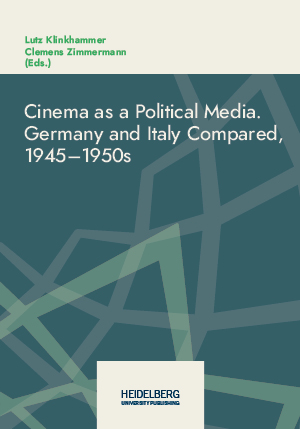How to Cite
Identifiers (Book)
Published
Film Policies and Cinema Audiences in Germany
After the war German cinema was by no means free, neither during the period of military occupation nor after the foundation of the two German states in 1949. While the Soviet Union’s film policy in Eastern Germany had set the course for the monopolization of film production, the Western Allies under the leadership of the USA had insisted on the destruction of the former Nazi film monopoly structures. With the beginning of the Cold War, the Federal Republic sought to exert a direct but hidden influence on the mass media, even though the constitution of the young democracy prohibited censorship: the state brought the most important newsreel under its control, exercised censorship, intervened in the film market and tried to re-establish cartels. As in Eastern Germany, the medium was to be ideologically rearmed which led to a complex network determined by political, ideological, economic and socio-cultural factors. This overview aims at putting the individual influencing factors in relation to one another. In doing so, a context is presented and analyzed that can shed light on the much-discussed continuities between the Nazi and the West-German cinema. There was indeed a “zero hour”: in the structure of the industry and the system of financing film production, in a new aesthetic and a new attitude. But there also have been continuities: in the political view on the propagandistic effect of film and the suggestibility of the masses, and also in reception when these masses pushed through their favor for pre-1945 films, with far-reaching consequences.





